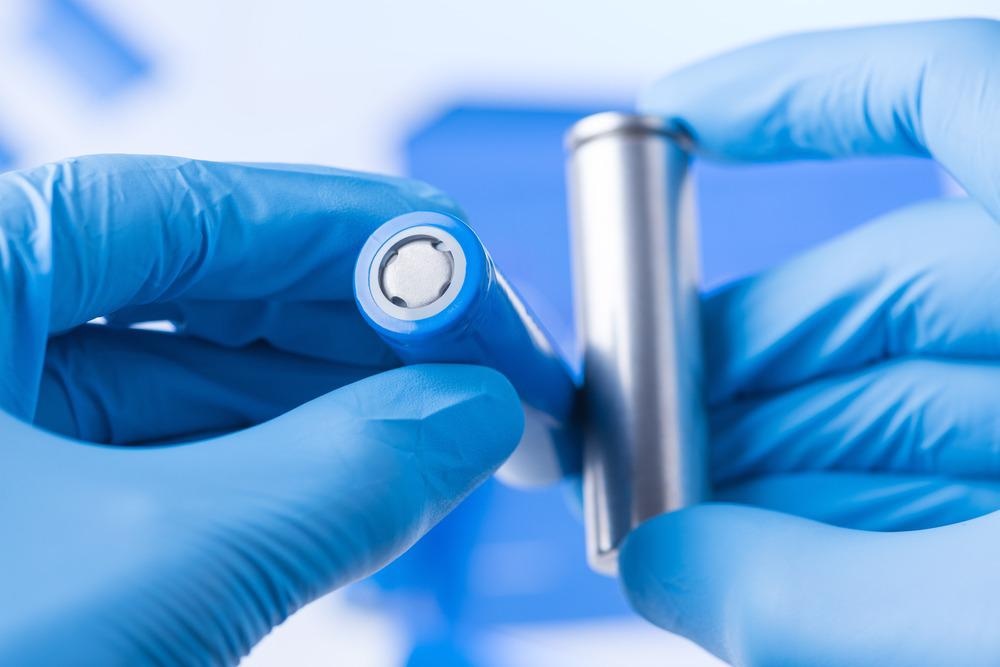The latest study in the Journal of Energy Chemistry presents a novel method of polymeric coverings planted on a Zinc substrate surface by using two-dimensional titanium carbide (Ti3C2Tx) MXene.

Study: MXene-assisted polymer coating from aqueous monomer solution towards dendrite-free zinc anodes. Image Credit: nevodka/Shutterstock.com
How do Coatings Improve Functionality?
The protective barrier created by coating materials can induce beneficial changes regarding functionality for a broad range of industrial applications, such as sustainable energy cells, orthopedic implantation, and photovoltaic panels.
Polymers – an Important Coating Material
Polymers are considered ideal for coating due to their tunable functionalities, robust adherence to multiple substrates, and improved ionic charge conductance. Additionally, polymers have long been regarded as efficient corrosion inhibitors.
Why are Zinc Ion Batteries Researched Extensively?
Zion batteries (ZIBs) are attractive options for electrical energy storage on a grid scale because of their substantial parametric capability, great spectrometric efficiencies, and low prices when contrasted with Li-ion batteries. Additionally, their environment-friendly operation with minimum emissions also is a major factor in their success.
Zinc Metal Anodes – A Brief Overview
The choice of Zinc metal as an anode material is popular because it causes no toxic emissions and has higher conceptual capacitance. Being intrinsically safe and environmentally friendly, Zinc seems to be the perfect choice for anode material; however, challenges remain.
The lower redox potential of the Zinc metal, the anodization process and the secondary difficulties, including H2 gas production, dendritic development, and the process of passivation, are major concerns. Intriguingly, a homogenous polymeric coating deposited on the substrate is employed to build a synthetic connection to protect Zn anodic materials from the issues above.
Why are Homogeneous Precursor Solutions Important?
A certified uniformly synthesized precursor is necessary to obtain a homogenous polymeric cover using fluid spraying processes.
It is difficult to employ monomers without treatment to fabricate a homogeneous covering because its synthesis always requires additional heat treatments. As a result, the precursor solution for covering is often made from polymeric substances, with liquids chosen depending on polymeric dispersion.
Importance of Aqueous Polymer Coatings
Owing to the solvents' unpredictability and cytotoxicity, it remains challenging to create homogeneous covering in a sustainable and ecologically acceptable manner. Aqueous polymeric coatings have gotten a lot of interest in this regard. However, due to inadequate regulation over the precipitation of water-soluble polymeric monomers, producing a highly homogeneous coating surface in a solitary step is difficult.
Importance of MXenes as Nano Fillers
Incorporating synthetic nanoparticles into the polymeric material substrate matrix has enabled the derivatization of polymers intended for various applications. MXenes a novel 2D material, can offer outstanding tensile, electrochemical, and thermodynamic characteristics as prospective nanofillers.
An Overview of Polymeric Coatings Derived from Monomers
Since a vast number of monomer substances are highly soluble in aqueous conditions, employing polymeric covering techniques developed from monomers to scatter nanofiller materials is widely preferred.
Research Findings
Additional thermal alteration methods, such as overheating or ultraviolet treatment, are not required in this study to initiate monomer dispersion, streamlining the manufacturing of polymeric coating substances. Furthermore, researchers developed polymer-coated Zn metals using several monomer solutions, proving the applicability of this technique. The two notable ones include PASM-Zn and PAMX-Zn.
The PASM-Zn monomer solution has a lifetime of over 1900 hours at a charge density of 0.2 mA cm-2 and a radial capacitance of 0.2 mAh cm-2. Furthermore, the PASM-Zn/NVO complete cells have exceptional conversion efficiency and cycling reliability, with a larger storage retention of 86.2 percent following 1000 complete cycles at a concentration of 4 A g-1 and a CE of approximately 100 percent.
In short, this research might bring a new framework for developing multidimensional polymeric coatings and pave the way for an optimum developmental model of extremely stable metallic anode material.
Reference
Wang N. et al. (2022). MXene-assisted polymer coating from aqueous monomer solution towards dendrite-free zinc anodes, Journal of Energy Chemistry. Available at: https://doi.org/10.1016/j.jechem.2022.06.009
Disclaimer: The views expressed here are those of the author expressed in their private capacity and do not necessarily represent the views of AZoM.com Limited T/A AZoNetwork the owner and operator of this website. This disclaimer forms part of the Terms and conditions of use of this website.